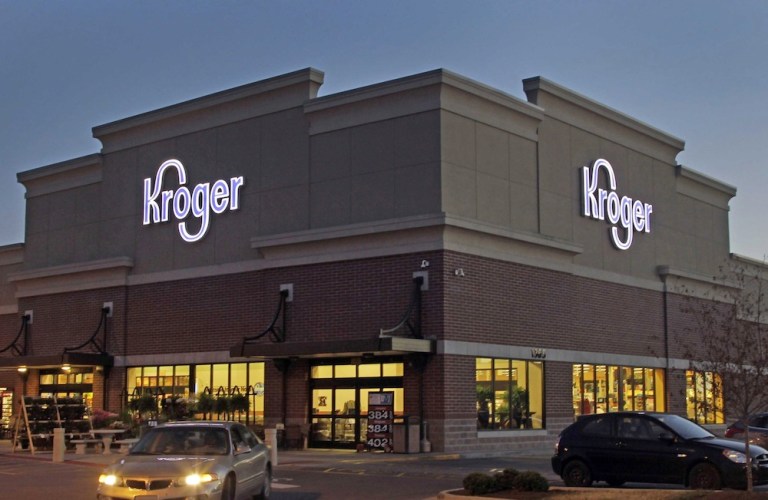The largest supermarket chain in the U.S., Kroger Co., is looking to keep up with the ever-quickening technology arms race that has infected the world of grocery over the last few years. Currently sensors and analytics technology to let shelves and products interact with shoppers are being tested in various locations nationwide.
The systems are designed to reach out and ping customers on their mobile devices — and clearly built to focus on personalizing and optimizing the grocery experience for consumers by offering tailored pricing on specific items or using or by helping consumers navigate the store by highlighting products on the customer’s mobile shopping list. Testing began in late 2016 and may expand by the end of this year.
“We want to bring technology to life in the store,” noted Chris Hjelm, Kroger’s chief information officer.
Online is a small bordering on fraction section of the national grocery spend — but competition in the space has been tightening, particularly as major heavy hitters like Amazon and Walmart are wading into the space. Amazon’s Fresh online service has been progressively expanding throughout the American urban landscape, and of late its ambitions seem to have grown to include brick-and-mortar grocery stores.
In the Amazon fully automated grocery store, customers can scan their mobile phones on a kiosk and then tap into a network of sensors that track items that shoppers take from shelves and charges their online accounts. Drive-through stores have also long been a bandied-about idea.
Kroger’s answer involves shelves that can communicate with shoppers by pinging them either about grocery list items (useful to anyone who has ever lost 45 minutes of their life wandering the aisles trying to find that last rare item on their list) or about items that might otherwise be of interest to shoppers.
Advertisement: Scroll to Continue
“We know what’s in the aisle and what the mobile shopper has told us and fuse all that data,” Hjelm noted.
And while he won’t rule out a full automated store, a la Amazon, in the future he did note that in a large-scale grocery operation, there are a variety of challenges logistically to address. Consumers, for example, change their minds and then put items back in the wrong location. That alone can do a lot of work to confuse sensors.
But Kroger is ready to think ahead — as it hopes to hold onto its number one spot as even groceries are getting digital.




